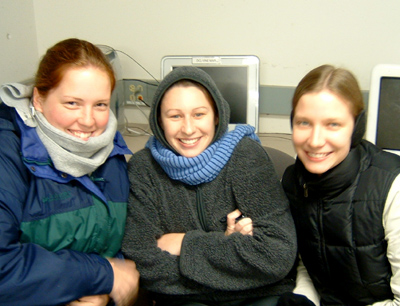 |
|||||||||||||||
| Abstract | |||||||||||||||
| Abstract | |||||||||||||||
| The University of Oregon’s Department of Architecture and Allied Arts provides a computer lab for its students. Occupants often complain of being cold, or “freezing”. This led us to investigate the sources of thermal discomfort during the fall/winter months. We hypothesized that the physical conditions in the Departmental Computer Lab (DCL) are outside of the thermal comfort boundaries set by ASHRAE Standard 55-1992. The methodology used to test the hypothesis included; keen observation of the site, mechanical drawings, as well as data collected by scientific instruments. We also spoke with Doug Gorder in Facilities Services, who is in charge of the HVAC for the University of Oregon campus. The physical conditions of the DCL were found to be well outside the ASHRAE thermal comfort boundaries. There are a number of factors that influence the thermal conditions within the room. The largest wall in the room is an exterior wall, 31% of which is glazed with single-pane glass and conductive metal frames. Furthermore, the thermostat for the computer lab is located in an adjacent room, alienating the controls from the occupied space. This study finds that physical conditions in the DCL are outside the comfort zone, due to combined effects of the mechanical systems, operations, and building construction. |
|||||||||||||||
| Introduction | |||||||||||||||
| Hypothesis | |||||||||||||||
| Inquiry | |||||||||||||||
| Methodology | |||||||||||||||
| Data/Analysis | |||||||||||||||
| Conclusion | |||||||||||||||
| Appendix | |||||||||||||||
| Credits | |||||||||||||||
 |
|||||||||||||||
| Jodi, Gina and Amy bundle up while conducting research in the DCL. | |||||||||||||||